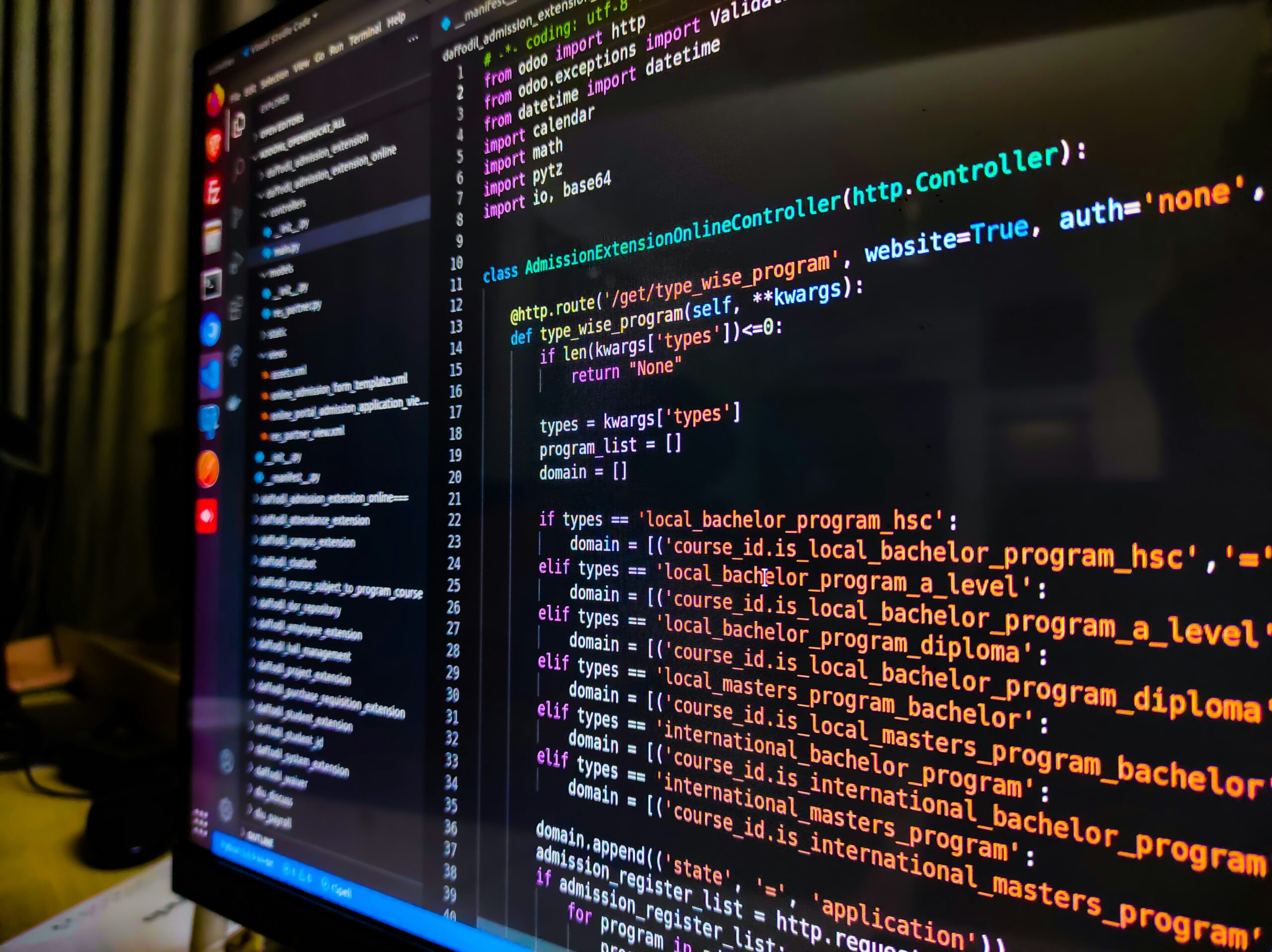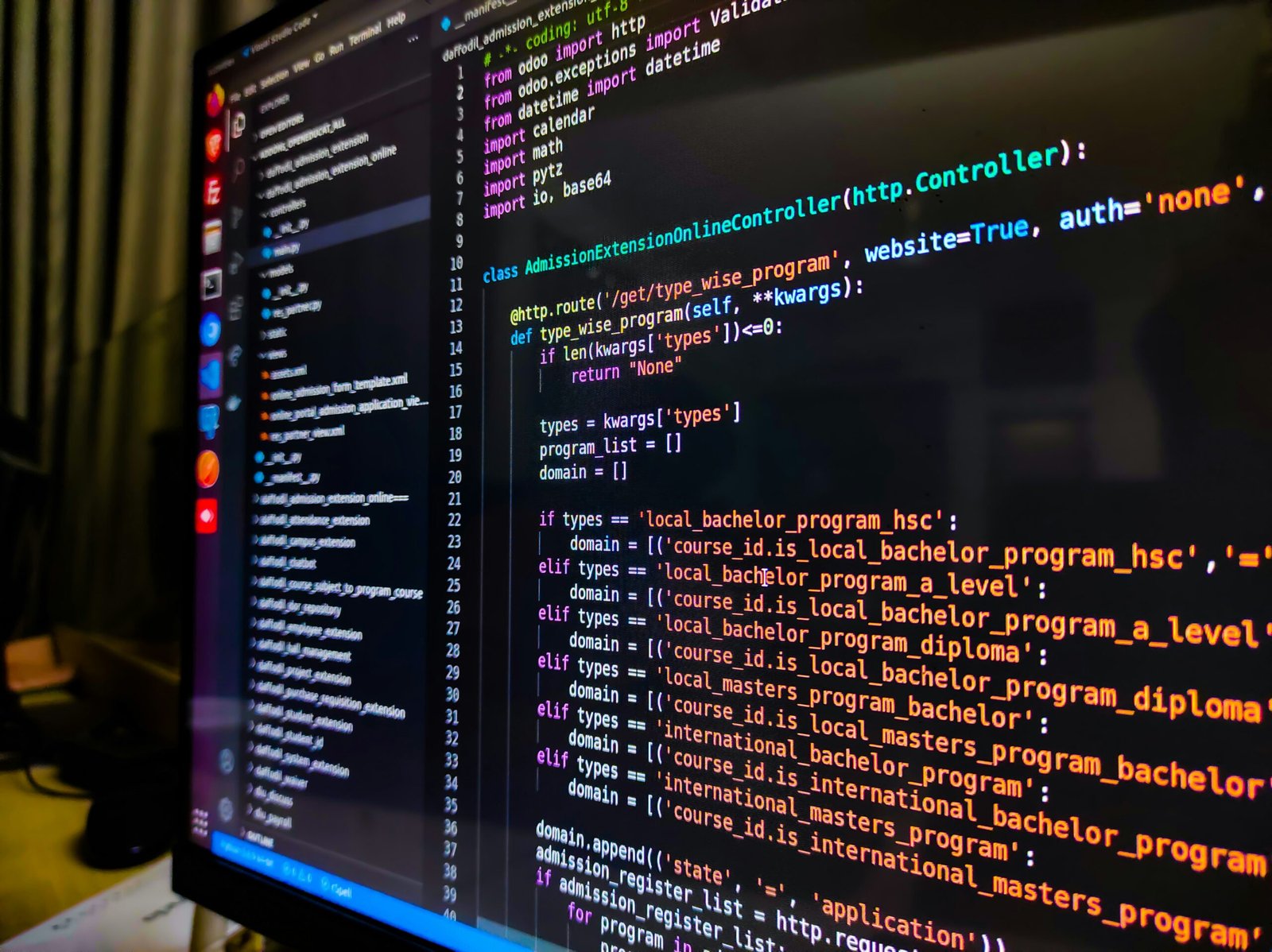
Understanding the Software Development Lifecycle: From Design to Maintenance

Introduction to Software Development
In today’s technology-driven world, the importance of software development cannot be overstated. At its core, software development refers to the structured process involved in designing, programming, testing, and maintaining software applications and systems. This process is crucial for delivering high-quality software products that meet user needs and performance expectations.
The software development lifecycle (SDLC) is a framework that outlines the stages of software development, from initial conception and design to deployment and ongoing maintenance. Within this framework, various methodologies exist, including Agile, Waterfall, and DevOps, each providing a unique approach to managing the complexities of software projects. These methodologies help guide teams through the required phases, ensuring a systematic and efficient workflow throughout the development process.
The overarching goals of software development extend beyond merely writing code. The objectives include creating solutions that are scalable, secure, and maintainable, as well as enhancing user satisfaction. The integration of best practices in software design and development helps ensure that products not only fulfill functional requirements but are also adaptable to future technological advancements and user needs.
Understanding the multiple dimensions of software development and its lifecycle is essential for anyone looking to engage with software products in a meaningful way. It provides a foundational perspective on how effective collaboration among various stakeholders leads to successful software creation and implementation.
The Software Development Lifecycle (SDLC)
The Software Development Lifecycle (SDLC) is a structured approach that outlines the various phases involved in software development, enabling teams to create quality software consistently and efficiently. The SDLC encompasses a comprehensive workflow that serves as a roadmap for developers, project managers, and stakeholders throughout the entire process, from the initial conception of an idea to software deployment and ongoing maintenance.
The phases of the SDLC typically include requirement analysis, design, implementation, testing, deployment, and maintenance. During the requirement analysis phase, developers gather and analyze the needs of the users to specify what the software must accomplish. Following this, the design phase involves creating architectural plans and detailed specifications that guide the actual construction of the software. In the implementation phase, programmers write the software code, transforming design documents into a functional application.
Once the software has been developed, it enters the testing phase. This crucial step identifies bugs or performance issues and verifies that the software meets the specified requirements. After thorough testing, the software is deployed to users, marking the transition from development to operational use. However, the SDLC does not end with deployment; the maintenance phase ensures that the software continues to function effectively, accommodate user feedback, and adapt to changing requirements over time.
Different models of SDLC, such as Waterfall, Agile, and DevOps, provide various approaches to conducting these phases. The Waterfall model emphasizes a linear progression through each phase, while Agile promotes iterative development and flexibility to adapt to changes. DevOps integrates development and operations teams to enhance collaboration and streamline workflows. Each model has its unique advantages, and selecting the right approach is critical for successful software development and delivery.
Designing Software: The Blueprint Stage
The design phase of the software development lifecycle (SDLC) is a critical juncture that establishes the foundation for all subsequent stages. During this phase, a detailed design of the software is created, encompassing essential components such as system architecture, interfaces, and user experience considerations. The goal is to create a blueprint that not only meets the specified requirements but also sets the tone for effective programming later in the process.
A well-crafted system architecture serves as a structural backbone for the software. It outlines how various components will interact within the overall framework, ensuring that each element aligns with the intended functionality. This architectural blueprint is vital for developers, as it guides them in creating modular components that can be independently developed, tested, and maintained. Emphasizing the importance of scalability and flexibility at this stage can facilitate a smoother adaptation to future changes.
Interface design also plays a pivotal role in the overall workflow of the application. It defines how users will engage with the software, highlighting the significance of creating intuitive, user-friendly interfaces that enhance the user experience. A well-designed interface not only increases user satisfaction but also reduces the time required for training and onboarding.
Prototyping is another crucial activity within the design phase. Creating prototypes allows developers and stakeholders to visualize the software’s functionality before full-scale implementation. These iterative models enable the identification of potential issues early in the software development process, thus saving time and resources. Additionally, comprehensive design documents are generated to capture all specifications and requirements, ensuring clarity and facilitating communication among the development team.
Ultimately, the design phase serves as the cornerstone of successful software development. By meticulously planning the system architecture, interfaces, and user interactions, teams can mitigate risks and establish a clear path forward. This attention to detail in the initial stages lays the groundwork for effective programming, rigorous testing, and efficient maintenance in the subsequent phases of the SDLC.
Documentation: Keeping Everything on Track
Documentation plays a crucial role in the software development lifecycle (SDLC) by ensuring that all aspects of a project are clearly communicated and accessible to relevant stakeholders. It acts as a comprehensive roadmap for developers, project managers, and other involved parties, guiding them through the various phases of the software development process. From initial requirements gathering to the final stages of testing and maintenance, effective documentation provides clarity and alignment on project objectives and processes.
At the outset, documentation captures the essential requirements, detailing what the software needs to accomplish. This requirements documentation becomes the foundation upon which the entire project is built. As programming progresses, design specifications and architectural decisions are recorded, allowing for a seamless transition between design and development phases. Clear and well-structured documents can prevent misunderstandings and costly mistakes, ultimately contributing to a more efficient workflow.
Moreover, user manuals and technical documentation are vital for the maintenance phase of the software development lifecycle. These documents ensure that future developers can understand the application’s functionality and structure, streamlining ongoing support and updates. In a field characterized by rapid technological change, maintaining up-to-date documentation is essential for long-term project success.
To document effectively, it is important to establish best practices that promote consistency and accessibility. Utilizing standardized templates and clear language will help keep information organized and easier to navigate. Additionally, incorporating visual aids, such as diagrams and flowcharts, can enhance understanding and retention of complex information. Regular reviews and updates to documentation should be scheduled to reflect any changes in project scope or functionality, thereby ensuring that it remains relevant throughout the software development lifecycle.
Programming: Writing the Code
Programming represents a pivotal phase in the software development lifecycle (SDLC), as it involves translating design specifications into a functional codebase. Writing clean, efficient, and maintainable code is essential for the longevity and adaptability of any software project. This process not only affects the initial implementation but also dictates how easily the code can be modified or extended in the future. Therefore, developers must prioritize coding standards and best practices throughout this phase.
One important aspect of programming is version control. Utilizing version control systems, such as Git, allows developers to track changes in their codebase efficiently. This enables team members to collaborate more effectively, as they can work on different features or fixes simultaneously, merging their contributions without overwriting each other’s work. Additionally, version control provides an audit trail, helping teams identify when and where bugs were introduced, thus facilitating more effective debugging and maintenance.
Code reviews also play a critical role in the programming phase. They help ensure that the code adheres to established coding standards and quality expectations. Through peer review, developers can provide constructive feedback on each other’s work, promoting the exchange of knowledge and fostering a culture of continual improvement. This collaborative effort contributes significantly to the overall quality of the software, making it easier to maintain as it evolves.
Furthermore, selecting the right programming languages and frameworks is vital, as these choices can impact the performance and scalability of the final product. Developers should consider the specific requirements of the project and the strengths of various languages and frameworks to optimize the workflow during the development phase. Ultimately, the programming stage sets the foundation for a successful software development project, where the emphasis on clean code, adherence to standards, and effective collaboration can lead to sustainable software solutions.
Testing: Ensuring Quality
Testing is a pivotal phase in the software development lifecycle (SDLC), designed to ensure that the final product meets specified requirements and functions as intended. It encompasses various types of testing, each with distinct objectives and methodologies. Unit testing is the initial step, focusing on individual components of the software. Developers write tests to verify that each function or method behaves correctly, thereby identifying bugs at an early stage of programming.
Following unit testing, integration testing takes place. This phase assesses the interactions between different modules or services within the software. Successful integration is vital, as it ensures that components work seamlessly together in a cohesive manner. By identifying issues during integration testing, developers can prevent bigger problems further down the development line.
System testing is the next step in the SDLC, taking a holistic view of the entire system. Here, testers evaluate the software’s compliance with documented requirements and expectations. This testing phase simulates end-user environments, providing insights into usability and identifying any potential pitfalls before deployment. Acceptance testing occurs last, typically involving clients or end-users who validate the product based on their needs. Their feedback is crucial, as it determines whether the software is ready for release.
Today, the role of automated testing tools has become increasingly prominent. These tools facilitate efficient testing processes, allow for more extensive test coverage, and enhance accuracy while reducing human error. They help streamline the workflow by automating repetitive tasks, thereby freeing up resources for focused quality assurance activities. By prioritizing thorough testing, development teams can ensure a higher quality product that fulfills user requirements and expectations effectively.
Maintenance: Keeping Software Up-to-Date
Maintenance is a critical phase in the software development lifecycle (SDLC), fundamentally ensuring that software remains functional, secure, and relevant over time. The necessity of software maintenance cannot be overstated, as it encompasses regular updates, bug fixes, patches, and enhancements that address both current and emerging challenges associated with the software. As programming languages and technologies evolve, so too do user expectations and requirements. Thus, maintaining software becomes an essential task to meet these evolving needs and technological standards.
One of the core aspects of software maintenance is the identification and resolution of bugs and security vulnerabilities. As software operates within a dynamic technical environment, new vulnerabilities may emerge, necessitating immediate attention. Failure to address these issues can lead to severe consequences, including data breaches, system failures, and loss of user trust. Therefore, implementing a robust workflow for the detection, reporting, and resolution of such problems is indispensable in sustaining the integrity of the software.
Moreover, user feedback is a critical driver of the maintenance process. As end-users interact with the software, they may identify areas for improvement that require updates or enhancements. Incorporating user suggestions into the software development process not only improves the utility but also fosters user satisfaction and loyalty. In the context of the SDLC, this iterative feedback loop can facilitate ongoing adaptations and refinements that enhance the overall software experience.
Nonetheless, software maintenance is not without its challenges. The complexity of existing systems, limited resources, and time constraints can make it difficult to enact necessary changes. Additionally, maintaining legacy systems often requires specialized knowledge and skills, which are often hard to find in the rapidly evolving tech landscape. Hence, successful software maintenance demands strategic planning and resource allocation, ensuring that software remains up-to-date and aligned with the current needs of the users and the market.
Common Challenges in Software Development
Throughout the software development lifecycle (SDLC), various challenges can surface that may hinder progress and impact project outcomes. Addressing these challenges is essential for achieving successful results in programming and maintaining software quality. One of the most prevalent issues is scope creep, which occurs when the initially defined project scope expands due to additional user requirements or features not accounted for in the original plan. This often leads to increased workload and may compromise the project’s timeline and budget.
Another significant challenge in software development is budget constraints. Limited financial resources can restrict the tools, technologies, and human resources available for a project, potentially resulting in suboptimal solutions. Consequently, project managers must engage in meticulous planning and prioritization to allocate funds effectively while still pushing the boundaries of their project’s capabilities.
Moreover, the rapid pace of technological advancements plays a vital role in software development challenges. The emergence of new programming languages, frameworks, and tools often requires teams to adapt their methodologies quickly. This can lead to difficulties in maintaining a consistent workflow and the need for continuous learning and upskilling among team members to stay relevant in an ever-evolving landscape.
Communication issues can also significantly impact project success. When team members, stakeholders, and clients are not aligned on project goals and expectations, misunderstandings can arise, leading to delays and reduced productivity. Employing collaborative tools and establishing clear communication channels can help bridge these gaps.
To overcome these challenges, organizations should implement agile methodologies that allow for flexibility and adaptive planning. Regular team meetings can encourage open dialogue, prioritize tasks, and address potential issues proactively. By acknowledging and tackling these common challenges in software development, teams can enhance their overall project management strategies, leading to more successful outcomes.
Future Trends in Software Development
The landscape of software development is evolving rapidly, driven by technological advancements and changing market demands. One of the most significant trends on the horizon is the integration of artificial intelligence (AI) and machine learning into the software development lifecycle (SDLC). These technologies promise to enhance programming efficiency by automating repetitive tasks, enabling developers to focus on more complex problems and innovations. AI-driven tools can streamline the coding process, offering suggestions and improving workflow, while machine learning algorithms can identify bugs during testing phases more effectively than traditional methods.
Additionally, low-code and no-code development platforms are gaining momentum, facilitating a shift toward more accessible programming practices. These platforms allow users with minimal coding experience to create applications, potentially transforming the workforce landscape. Consequently, software development teams may see an increase in collaboration across disciplines as business stakeholders engage in developing solutions, thus expanding the involvement of non-technical personnel in the SDLC. Such a shift could lead to faster turnaround times and a more agile approach to software creation and maintenance.
Moreover, the emphasis on cybersecurity is becoming a hallmark of modern software practices. As cyber threats grow more sophisticated, integrating robust security measures into the software development lifecycle has never been more critical. This trend advocates for a ‘shift-left’ approach, where security considerations are incorporated early in the design and development phases, rather than being an afterthought during testing or deployment. This proactive stance is essential for ensuring the security and resilience of software products in an increasingly digital world.
These emerging trends indicate a future where software development becomes more automated, collaborative, and secure. As the industry adapts to these changes, practitioners will need to remain vigilant and flexible, continually learning to harness new tools and methodologies while maintaining high standards in testing and maintaining software solutions.


